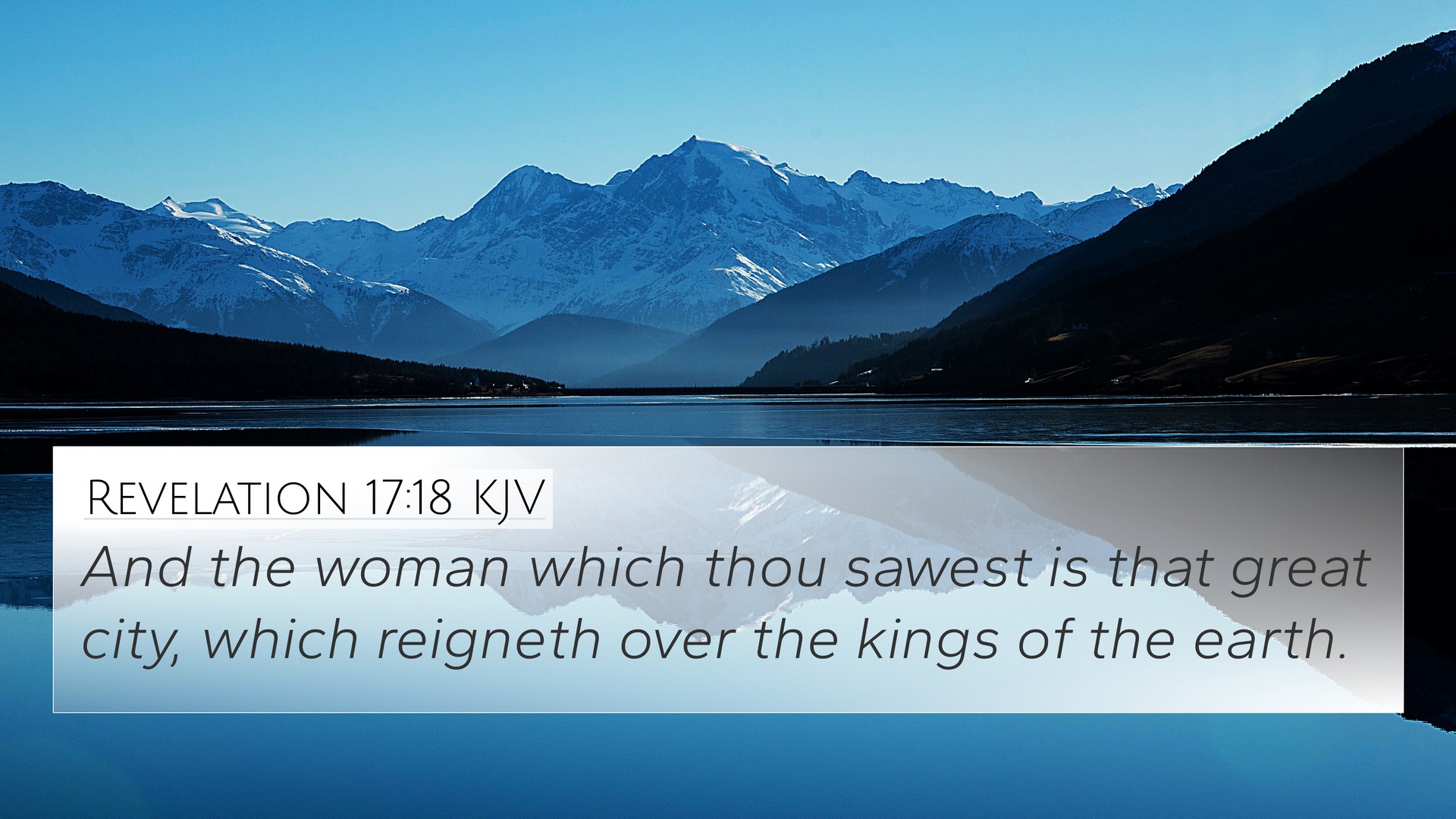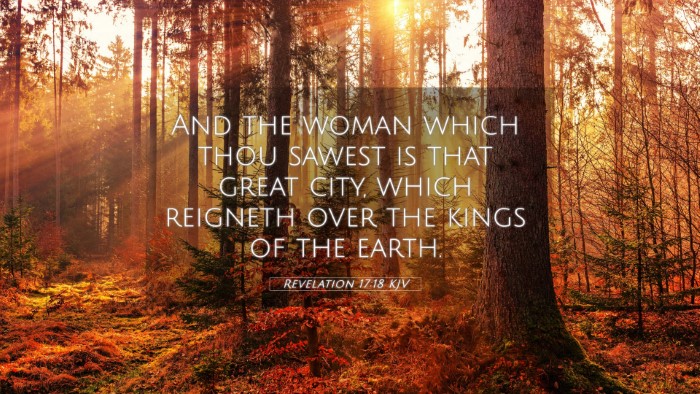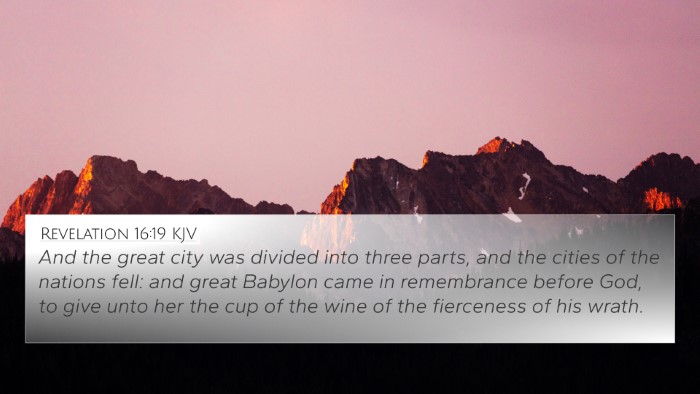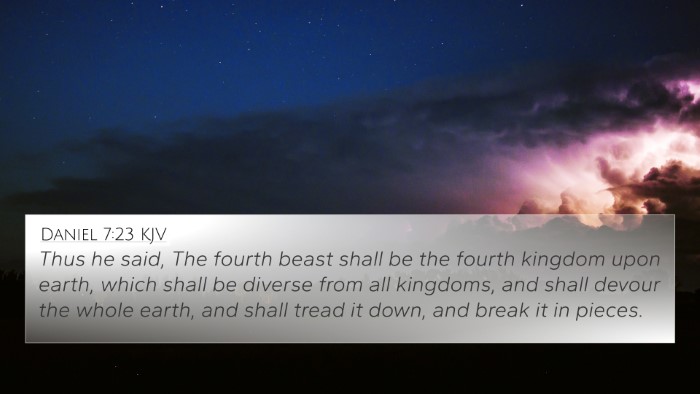Understanding Revelation 17:18
The verse Revelation 17:18 states: "And the woman whom you saw is that great city which reigns over the kings of the earth." This verse has long been a subject of interpretation and analysis within Christian theology. Below is a summarized explanation combining insights from notable public domain commentaries including those by Matthew Henry, Albert Barnes, and Adam Clarke.
Context and Overview
Revelation 17 is part of a symbolic revelation given to John concerning the fate of Babylon, often interpreted as a representation of corruption and apostasy. The city mentioned in this verse signifies a powerful entity that influences rulers and empires.
Key Insights from Commentaries
- Matthew Henry: Henry emphasizes the symbolic nature of the woman, suggesting she represents a religious system or city characterized by luxury, idolatry, and moral decay that leads the kings astray.
- Albert Barnes: Barnes notes that the "great city" symbolizes worldly powers. He interprets the alliance between political and religious entities as critical to understanding the struggle between divine authority and earthly dominion.
- Adam Clarke: Clarke draws parallels with historical instances of corruption within Christendom, reflecting on how this city metaphorically corresponds to entities throughout history that have acted in opposition to the principles of the faith.
Thematic Connections
This verse invites several thematic Bible verse connections, creating a web of scriptural dialogue that enriches understanding:
- Daniel 2:44: This verse predicts God setting up a kingdom that will never be destroyed, contrasting the temporality of worldly kingdoms.
- Revelation 14:8: Focuses on the fall of Babylon, reiterating the fate of the corrupt system that the woman symbolizes.
- Isaiah 47:1-15: Details the humiliation of Babylon, offering historical context to the prophecies of Revelation.
- Jeremiah 51:7: Indicates that Babylon was a golden cup in God's hand, signifying its influential role, which has moral implications.
- Revelation 18:2: Confirms the downfall of Babylon, emphasizing finality in God’s judgment against the corrupt city.
- Matthew 5:14: Highlights that believers are to be the light of the world, countering the darkness represented by the great city.
- Revelation 13:1: Provides context on the beast and its relationship with the woman, illustrating the connection between earthly power and unholy alliances.
Inter-Biblical Dialogue
The relationship between these scriptures creates an inter-Biblical dialogue that reflects a consistent theme of divine judgment against corrupt systems.
This cross-referencing of Biblical texts allows for a thorough comparative Bible verse analysis. For instance, contrasting the principles embodied in Revelation 17:18 with the verses describing God's promised kingdom showcases the dichotomy between earthly reign and divine sovereignty.
Application of Cross-Referencing Tools
Understanding Revelation 17:18 through cross-referencing can enhance one’s study of Scripture. Here are some suggested tools and methodologies for Bible cross-referencing:
- Utilize a Bible concordance to search keywords related to Babylon and rulership.
- Implement a cross-reference Bible study technique by grouping verses that discuss themes of judgment and corruption.
- Explore a comprehensive Bible cross-reference guide that connects explorations of scripture across various themes.
- Engage with classical literature on Biblical themes to understand deeper implications and connections.
Conclusion
In Revelation 17:18, the "great city" serves as a powerful allegory and invites readers to consider the broader implications of alliances between spiritual and worldly authorities. Through comprehensive study and tools for cross-referencing, believers can gain clarity on the connections between various theological concepts throughout Scripture. As one studies these interrelated verses, the deeper meanings and connections between the Old and New Testament reveal a coherent narrative regarding God’s ultimate sovereignty and judgment.








